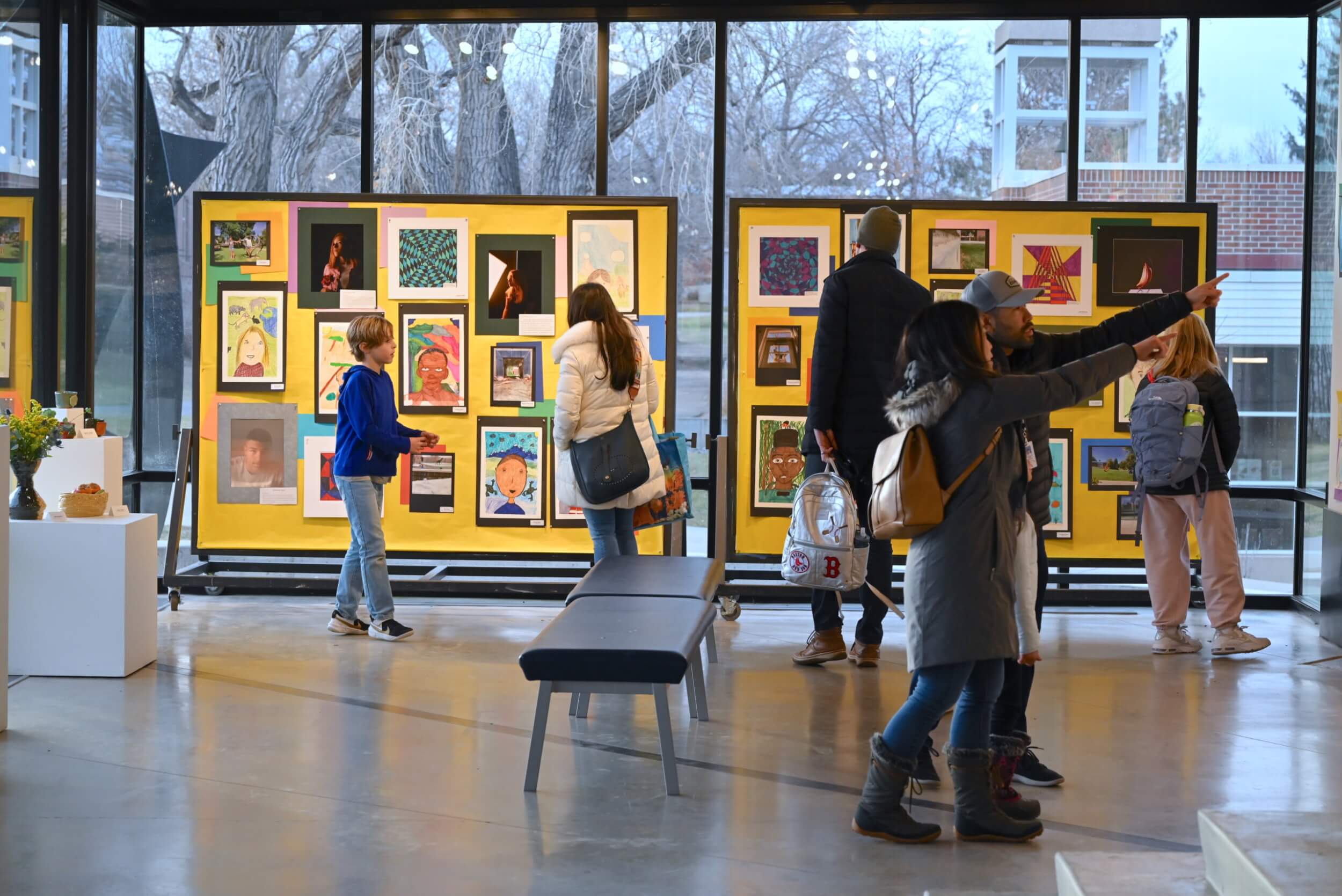“At Colorado Academy,” says Director of Visual & Performing Arts Katy Wood Hills, “every student is an artist.”
That’s why every CA student loves to see their creative efforts displayed in the gallery spaces of the Ponzio Arts Center, where they rub shoulders with the work of visiting professional artists, as well as the pieces in CA’s permanent collection.
“When our artists see their work up on those walls, they get the message that their art is important,” Hills continues. “For some students, that’s critical. They may feel like their artwork is where they truly come alive and where their voice really counts. We want every student to feel that they have a voice here at CA.”
Ponzio’s expansive galleries—brightly lit and easily visible to passers-by through the floor-to-ceiling windows that make up the building’s front façade—were the setting for the opening of the annual Pre-K–Grade 8 Arts Showcase on December 13, 2022. The huge collection of work by nearly 600 students, which runs through January 13, features everything from free-form watercolors by CA’s youngest artists in Pre-K, to sophisticated photographic portraits, handbuilt ceramics, and AI-inspired digital collages by advanced Middle School creators.
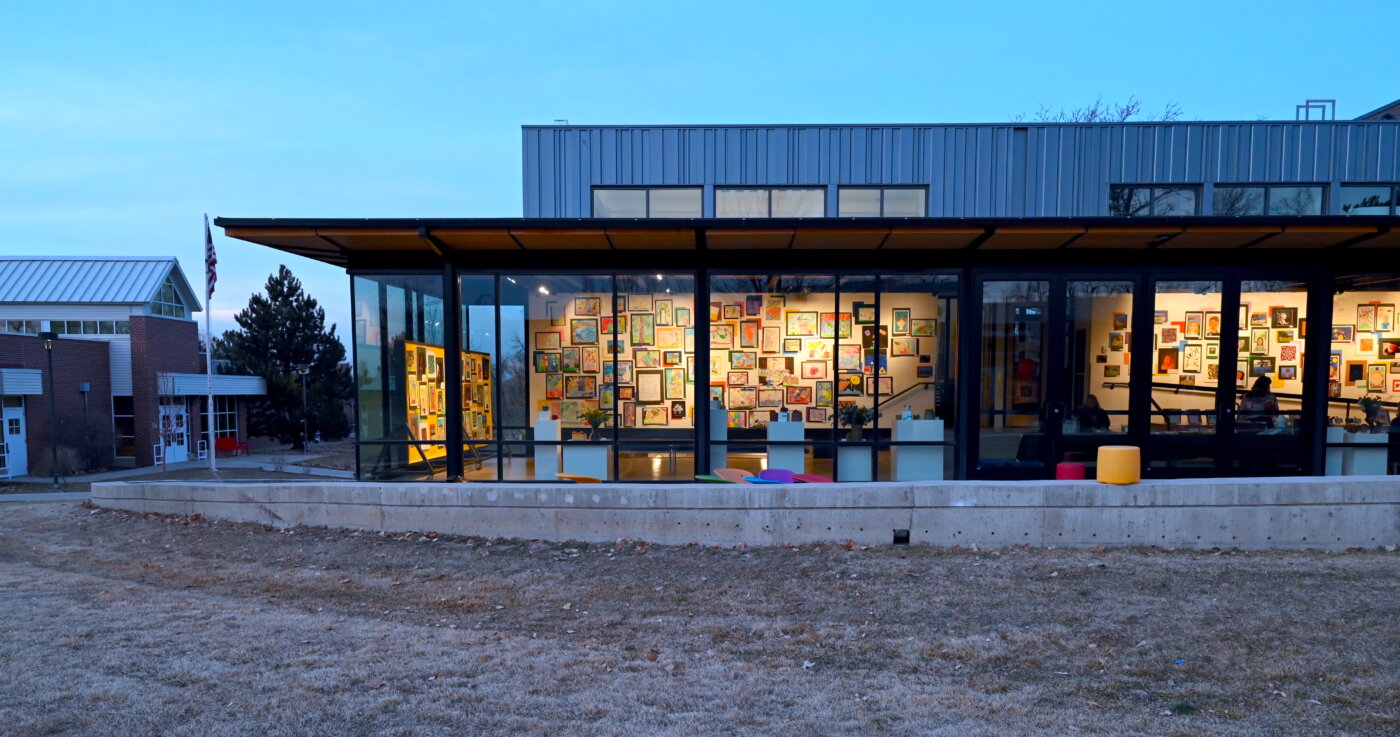
Through this vast range of colors, ideas, and media, according to Hills, the show clearly reveals the two main threads of CA’s visual arts program.
“On the one hand, we teach all our students, even the youngest, the essential art-making skills and techniques they will use throughout their CA careers. So, many of the works a visitor encounters at the Showcase served as exercises aimed at helping students hone those core strengths.”
“At the same time,” adds Hills, “we want students to understand that being an artist is a way of helping others see the world differently. What is it that they might want to say to the world through their art? What stories do they want to tell? Those questions are equally reflected in the works on display.”
The combination of the technical with the expressive is clearly evident in the self-portraits created by Lower School art teacher Jorge Muñoz’s Fifth Graders. Inspired by their study of the life and work of Frida Kahlo, the evocative illustrations “rely on facial proportion fundamentals and animal drawing techniques to reveal something unique about the creator,” says Muñoz.
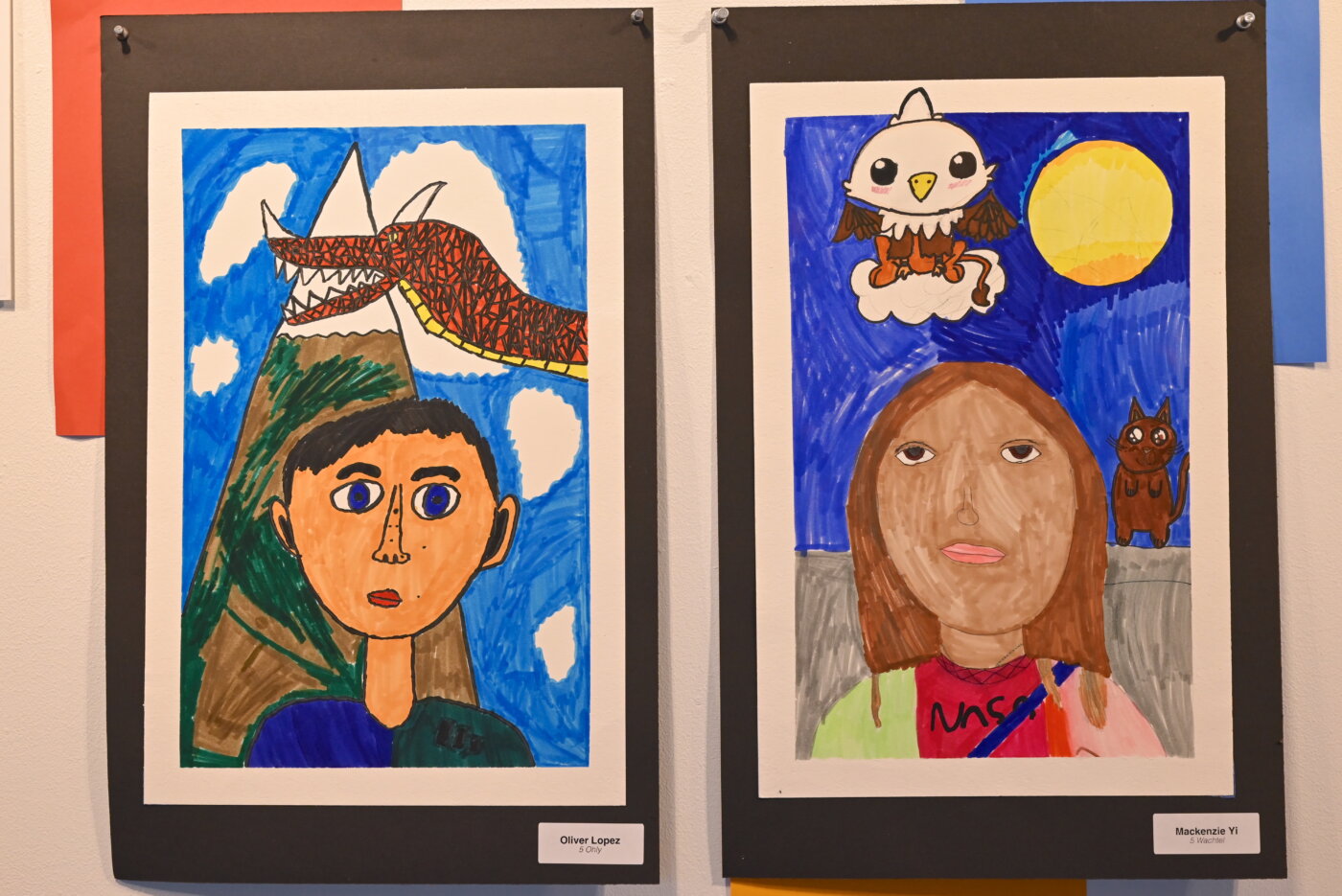
Muñoz’s Fourth Graders also began their work with research, but focused their time on a cryptozoology project in which they were tasked with designing and creating their own cryptological creature. The cryptids, Muñoz says, “are presented here in the form of a field guide that includes a fact sheet, an illustrated depiction of the creature, its habitat, and a map of where the creature might be located.”
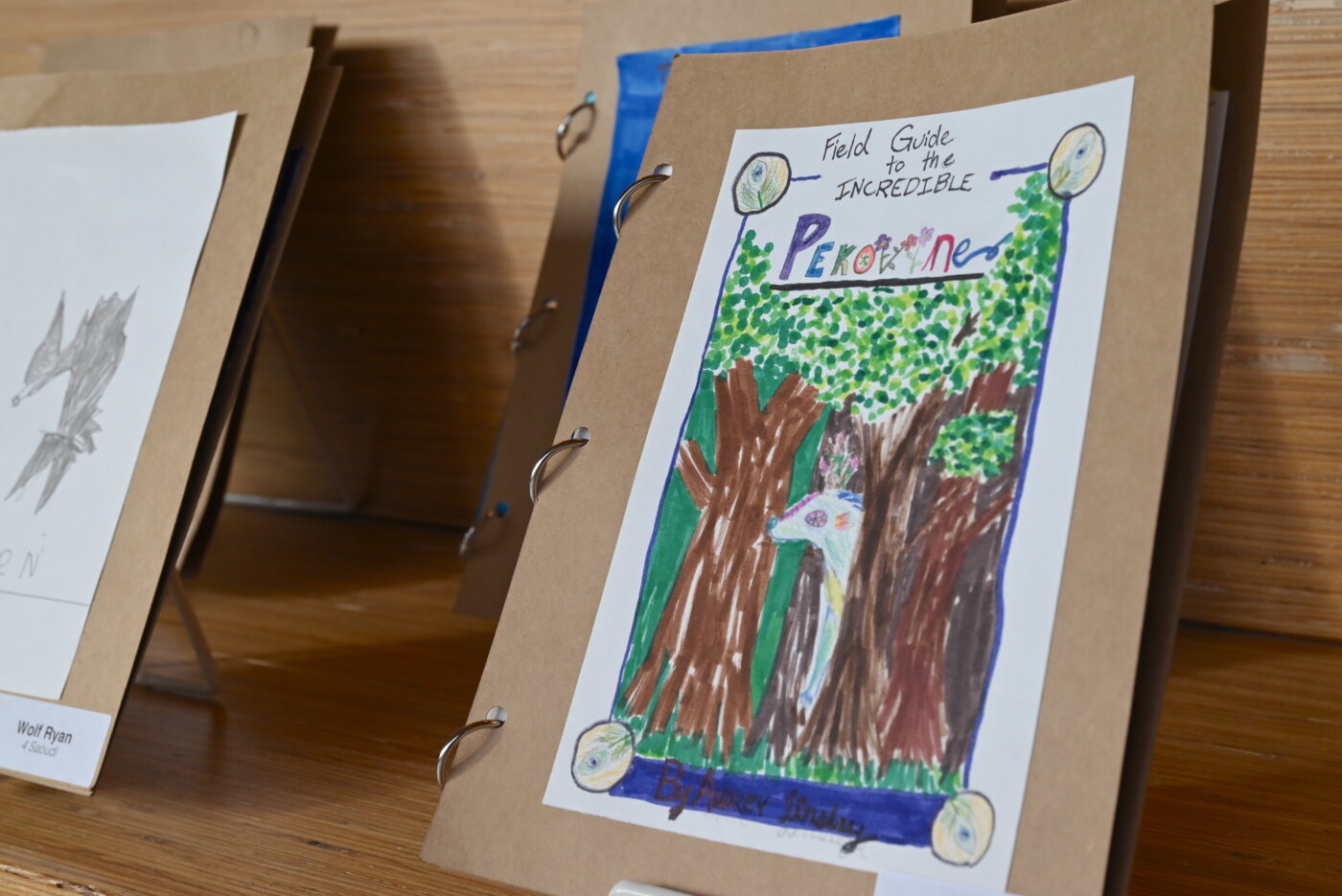
For Lower School art teacher Angela Hottinger, who teaches Kindergarten through Third Grade students, the goal is to engage the imagination and enthusiasm of young artists by allowing them to use various art centers in the classroom freely.

“The curriculum connects with each student’s motivations, embracing play and experimentation, essential to developing their creative thinking abilities, self-confidence, and grit,” Hottinger explains. “Instead of completing a project based on a teacher-designed art problem, you will see the work of children who are thinking, working through ideas, and connecting to the process and meaning behind their work. Students develop their ‘art toolbox’ by acquiring new skills and techniques taught during demonstration lessons, creative challenges, peer sharing, and contemporary artist and art world connections.”
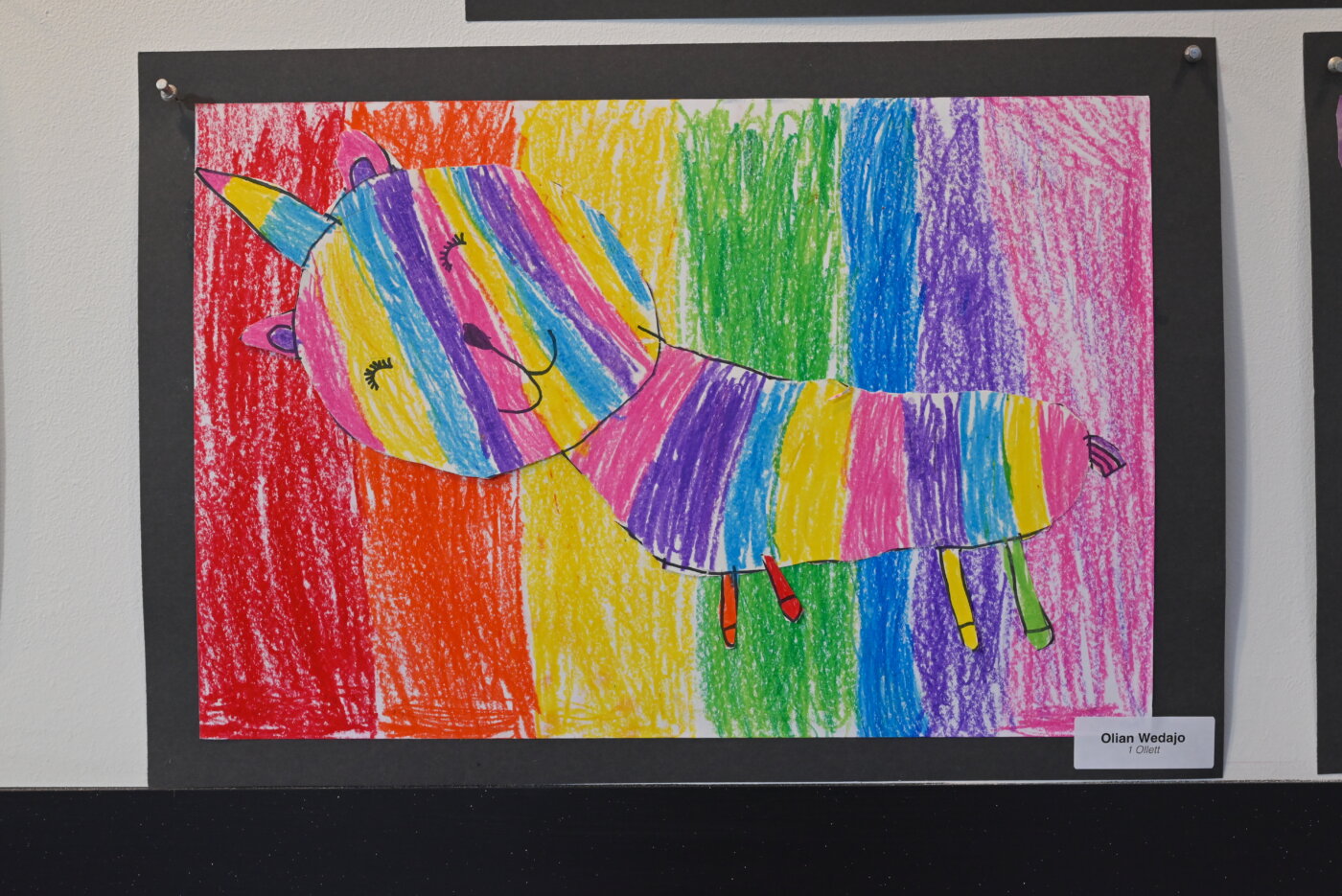
The result of this flexible, student-driven approach is a plethora of creative concepts, collaborative visions, and narrative works that highlight the imagination and observations of students who are confidently forging ahead on their artistic journey.
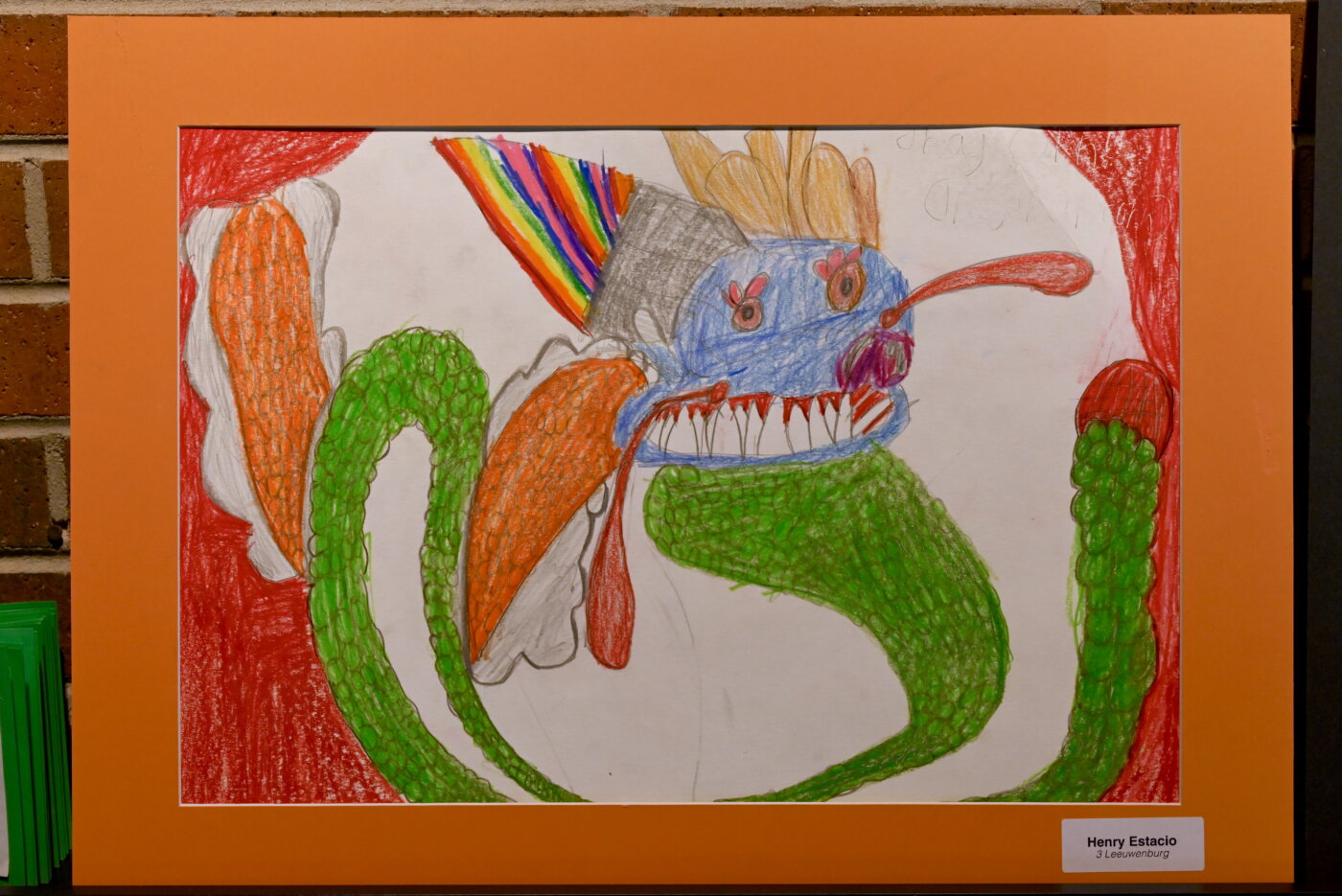
Becci Marzonie, Middle School ceramics teacher and Raether Library Assistant, has her Seventh and Eighth Grade students research and then “pitch” their clay hand-building projects to her and fellow students before getting started. The finished mugs and vessels on display demonstrate a trimester’s worth of learning about clay bodies and the textures and uses for those clay bodies, along with lots of practice with pinch pots, coil pots, and sculpting.
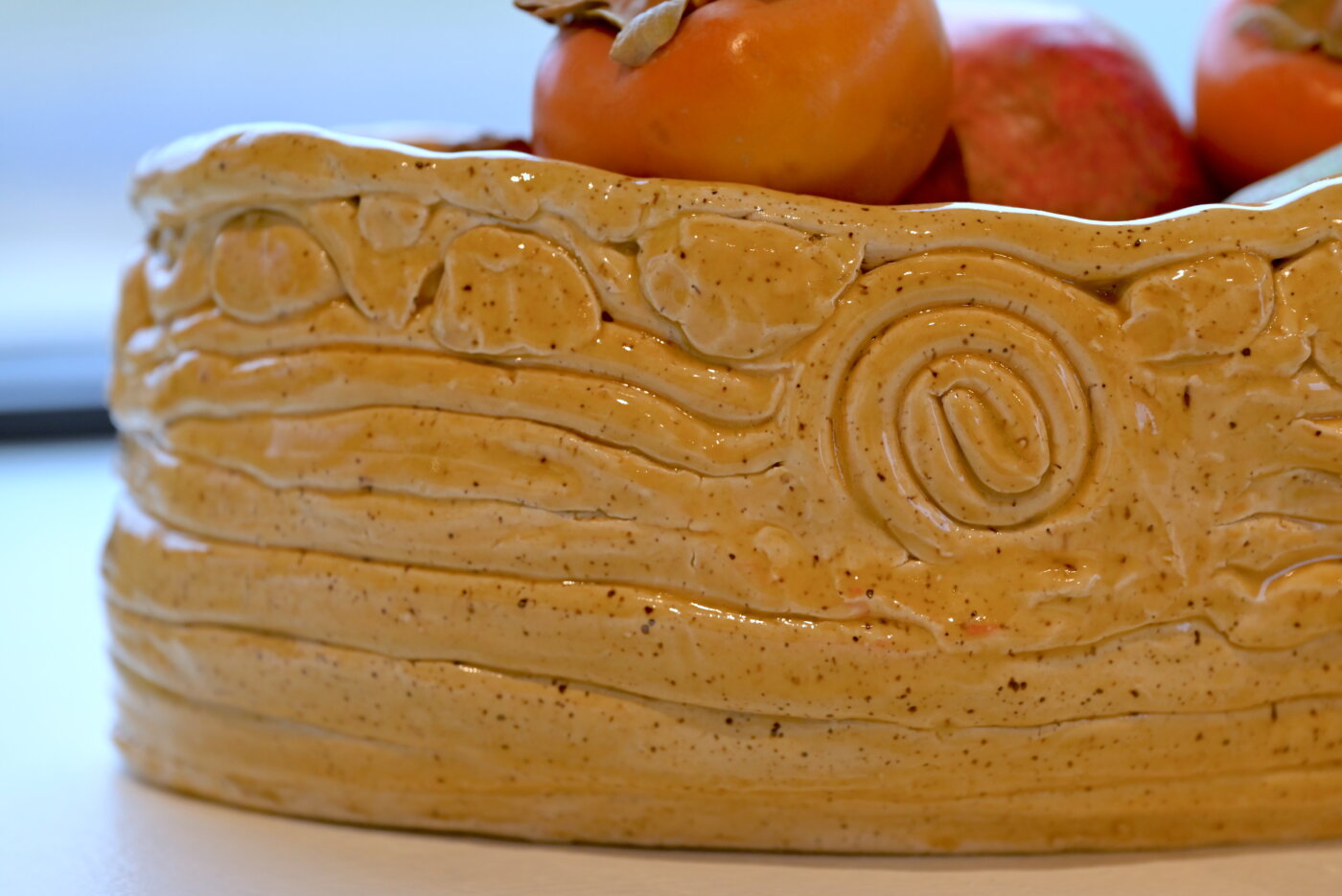
In Middle School photography teacher Karen Donald’s classes, students master the technical elements of photography and digital imaging on their way to producing work that elicits an emotion or tells a story.
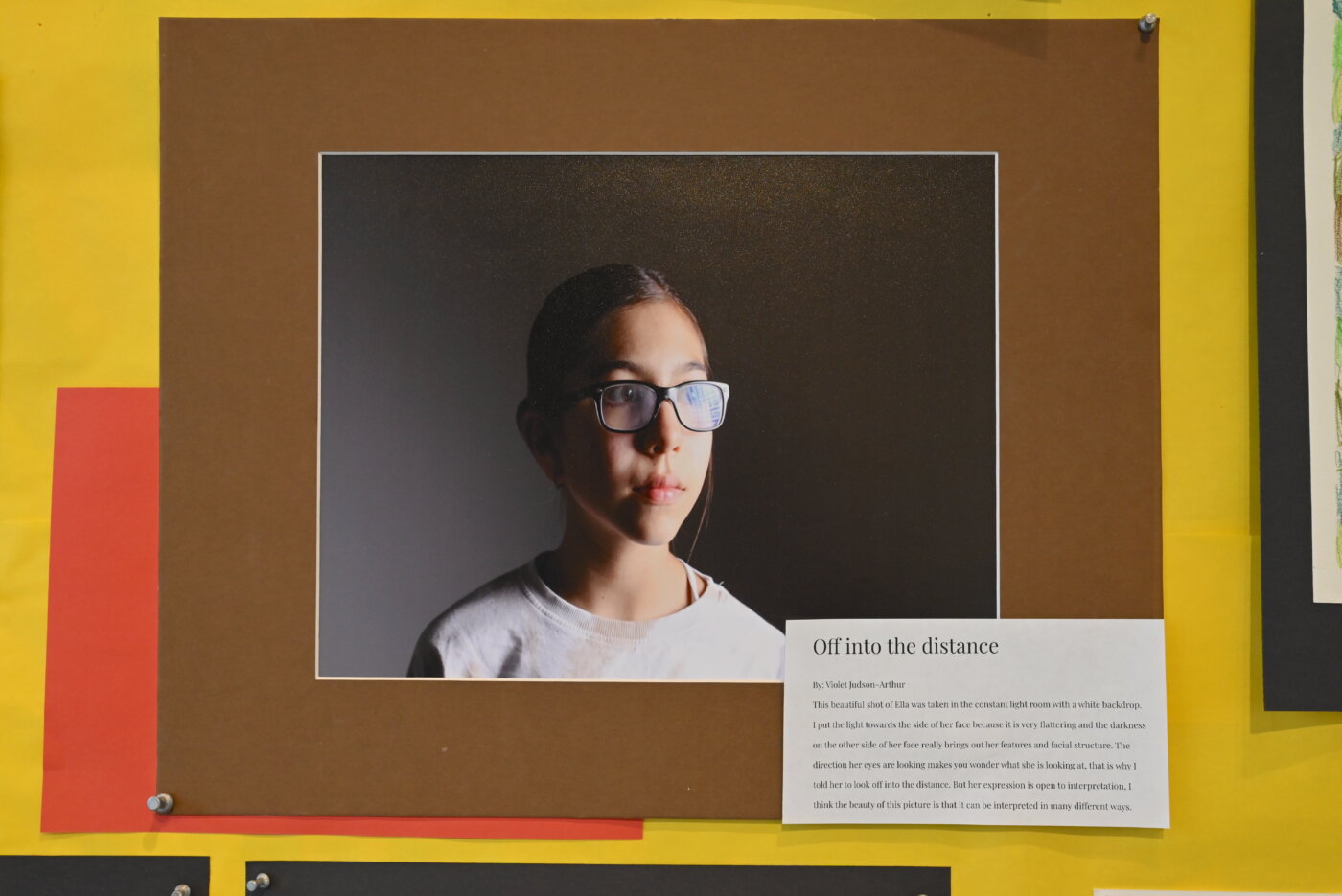
“Sixth through Eighth Graders are developing their skills and knowledge of photography—specifically, how to manipulate the manual settings on a DSLR camera and how to implement creative approaches to taking photographs. Students also learn how to use various studio lighting equipment,” Donald says.
The unconventional Middle School portraits and still-life artworks that are displayed throughout Ponzio’s gallery spaces offer a marked contrast to the brightly colored and often exuberant expressions of younger students. This difference demonstrates not only a shift in medium and technique, but also an evolution in the concerns and perspective of the artist.

The delightfully childlike works by Muñoz’s Pre-K students keep the Arts Showcase grounded in the midst of material that at times is more serious. These young artists’ still-developing fine and gross motor skills are on display in watercolor paintings that make use of line and shape, as well as fruit-inspired still-life illustrations.
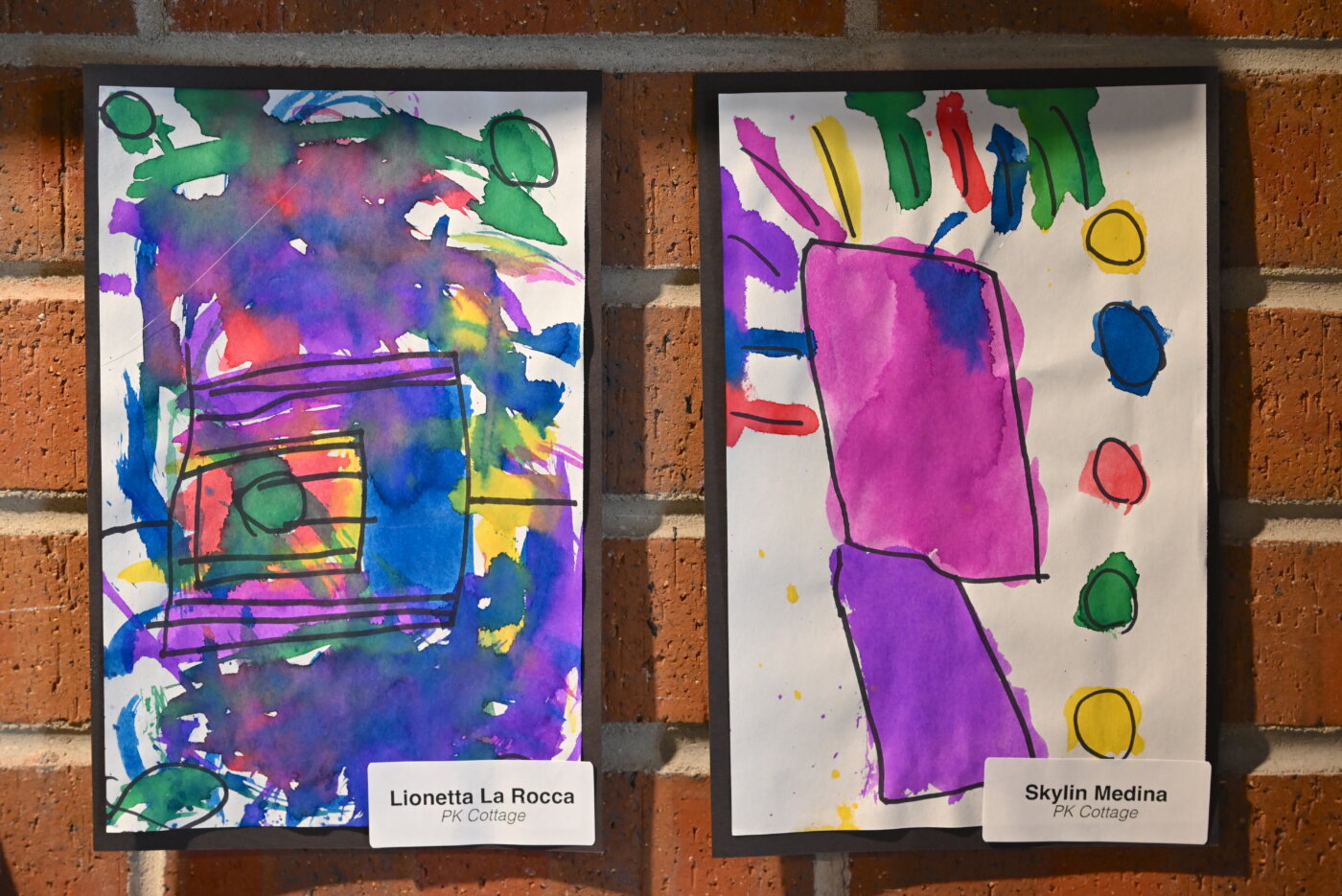
There’s something a little childlike about the AI-inspired digital collages created by Middle School photography teacher and Assistant Director of Admission Abel Ramirez’s Sixth Graders, who used iPads to experiment with compositional techniques such as the rule of thirds, leading lines, forced perspective, and point of view. The projects they dreamed up—featuring hovering people, animals in unexpected places, and other fantastic scenes—remind viewers that art is fundamentally about seeing the world in a new and creative way.
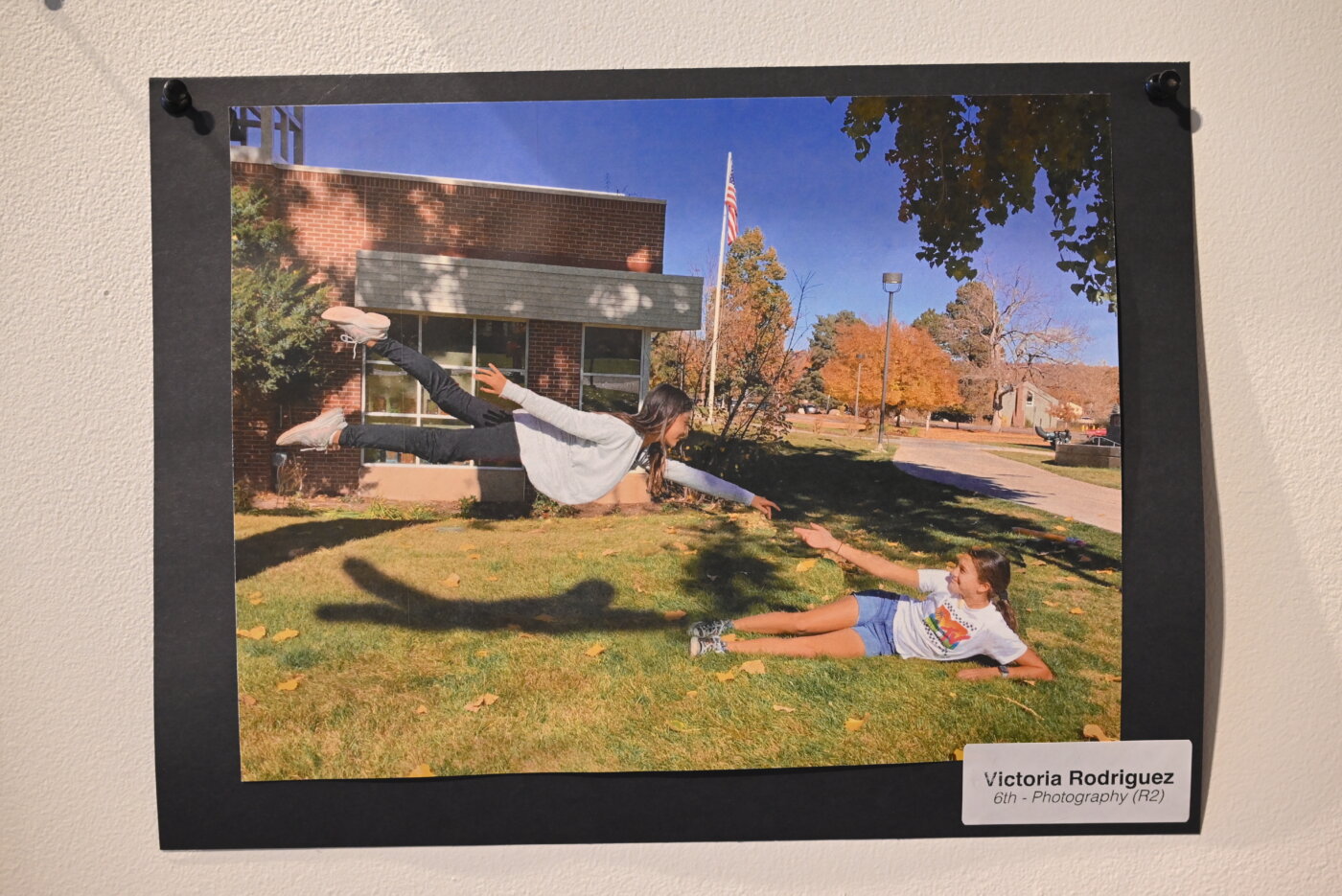
As Hills explains, “Our society often thinks that if someone can produce a representational work that looks real, then they are an artist. But I would argue that it is when artists—and students—take the world they see and make it look completely different that things start to get really interesting. At CA, we provide the time and the space for that to happen—for our students to begin to think about the ‘why?’ behind what they’re making.”
Time and space are critical, Hills emphasizes, for developing those foundational habits that enable artists to thrive as creators and as students.
“We ask our students to engage on a daily basis with their work; we encourage them to persist through a challenge. These habits leave the studio. Knowing how to engage and persist when things get difficult isn’t something you just do when you’re in the Ponzio Art Center. The lessons our students learn here can stay with them the rest of their lives.”
